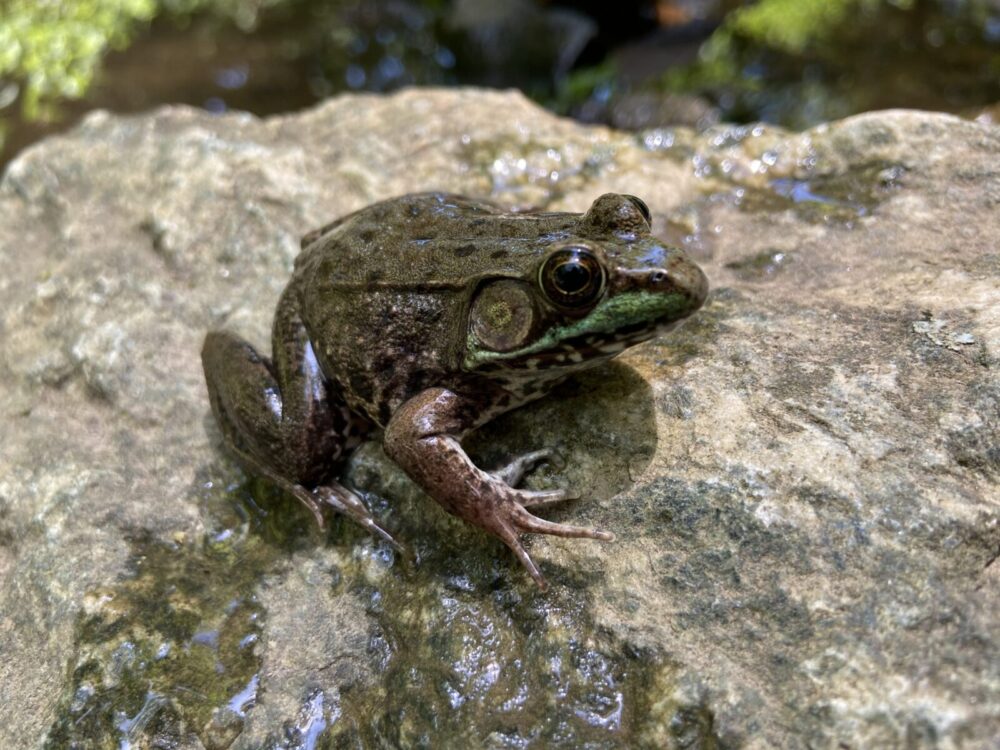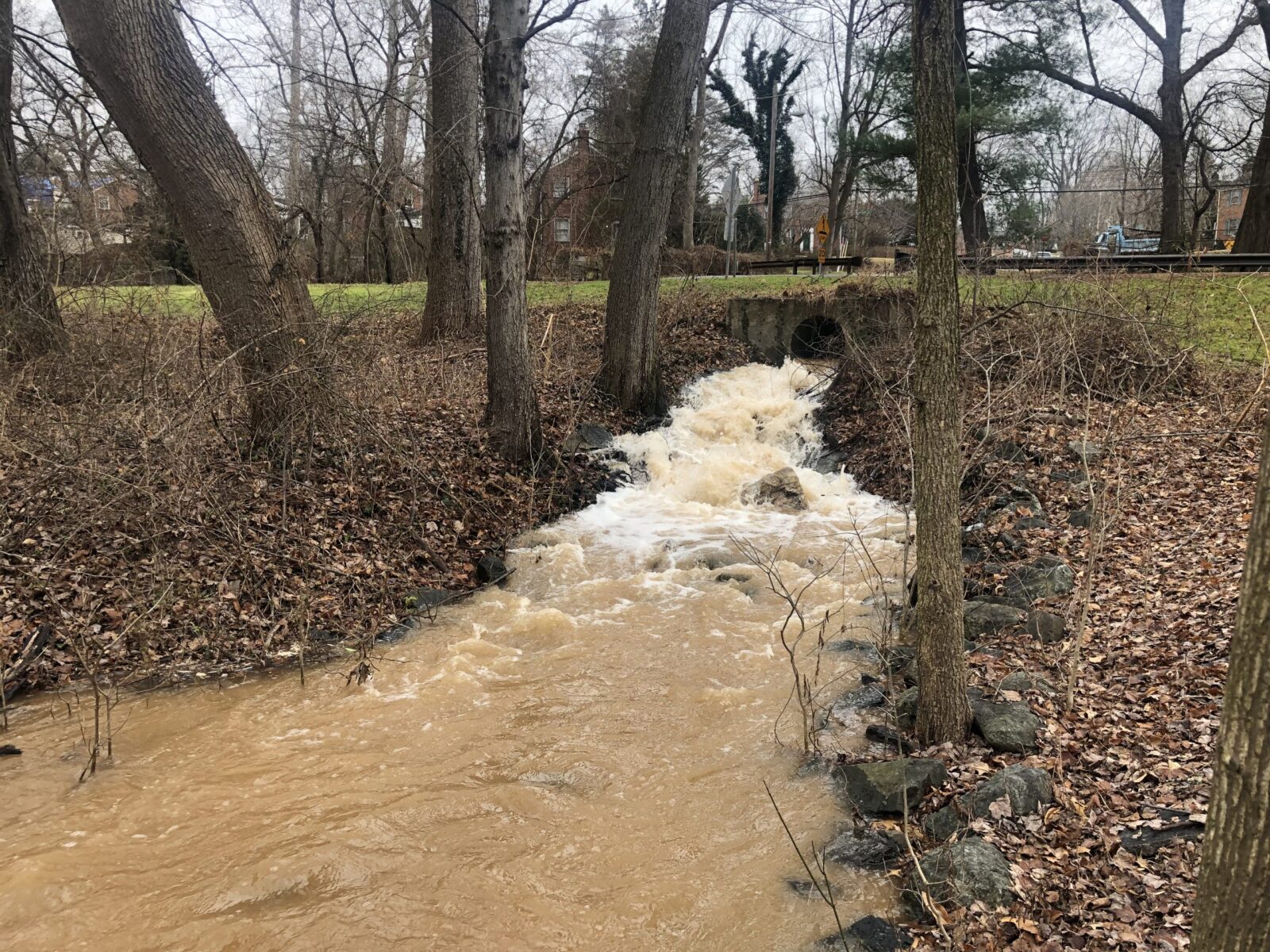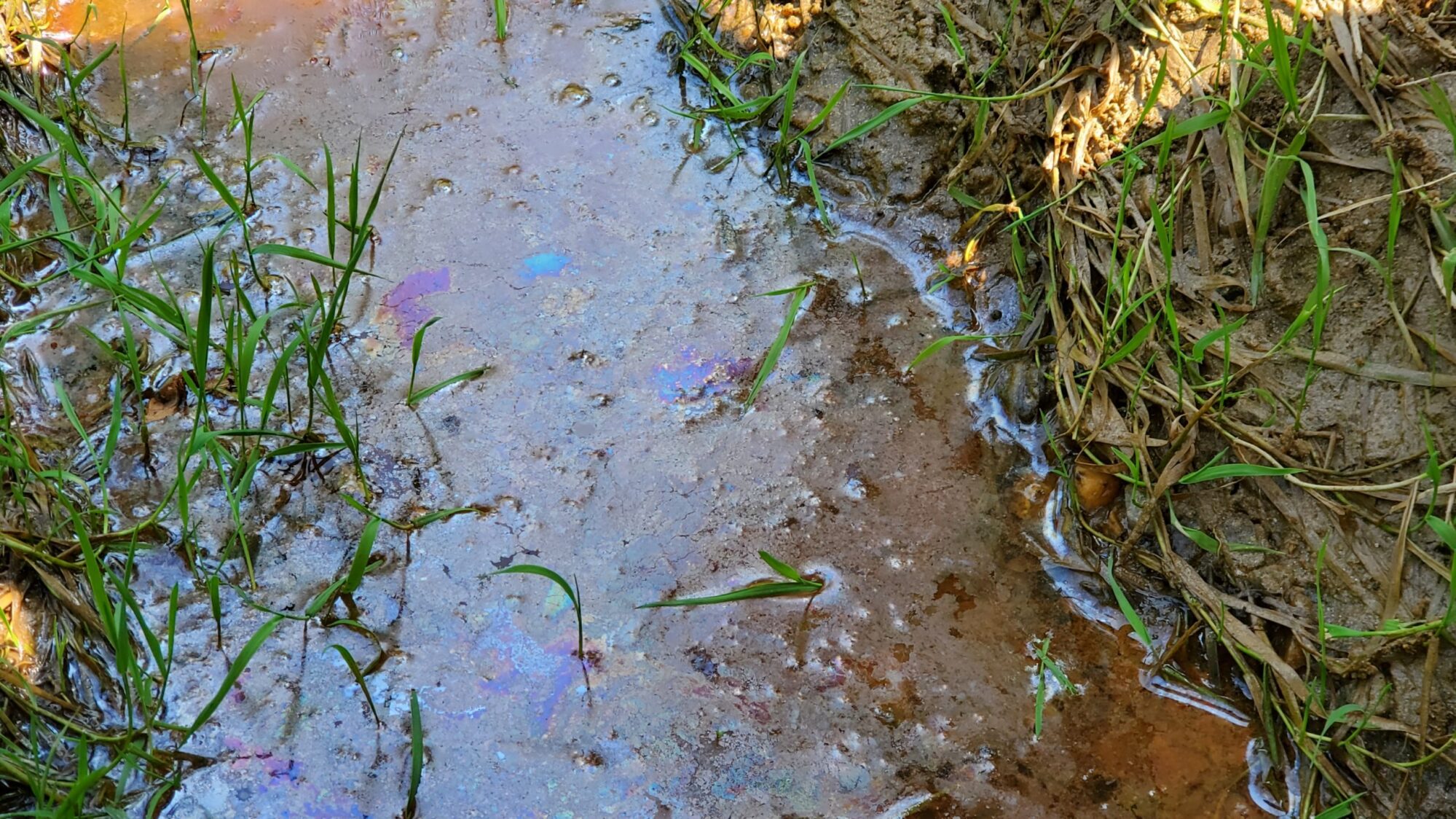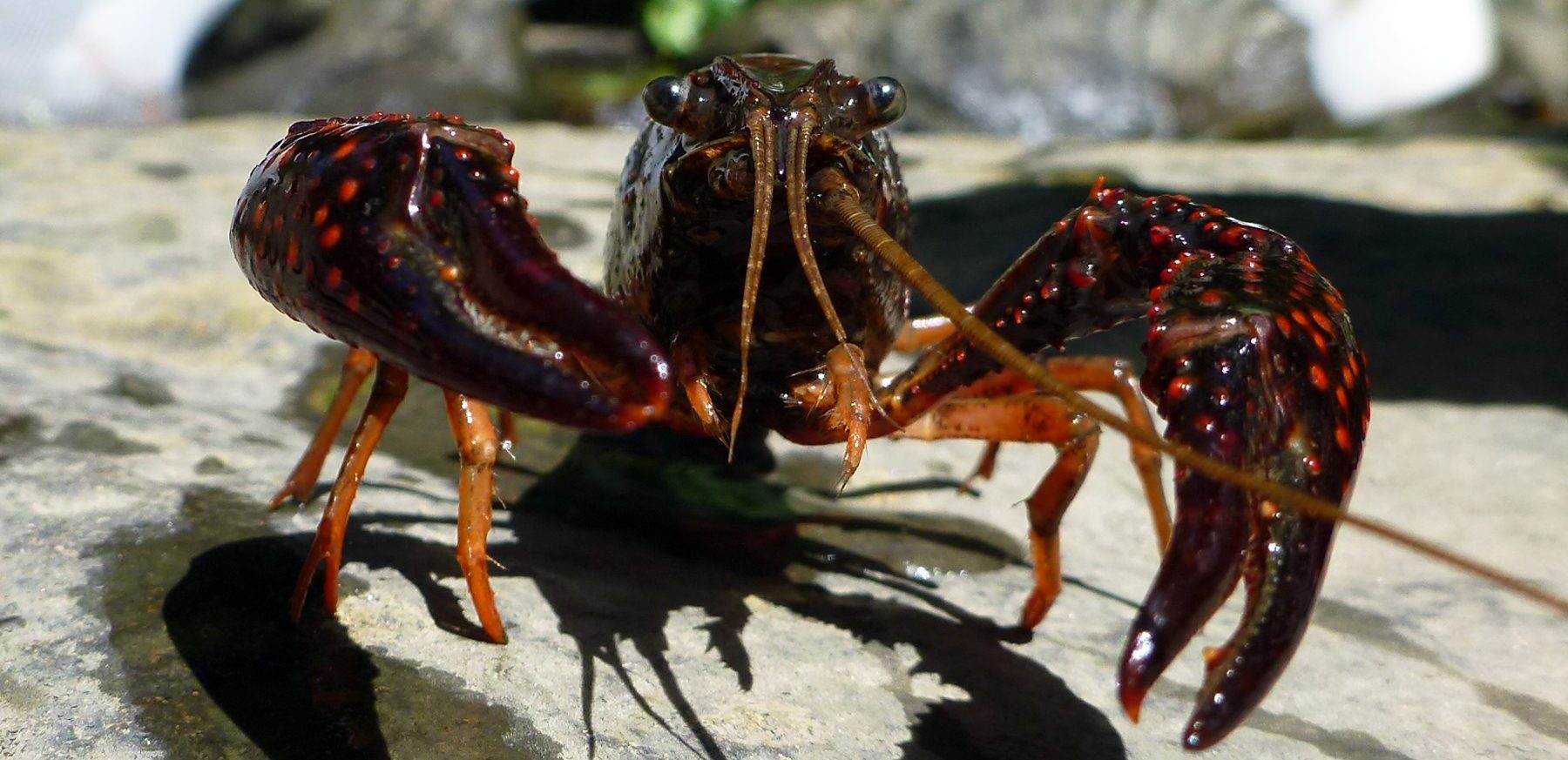Managing Water Quality on Parkland
Protecting natural and cultural resources; encouraging recreation while promoting conservation; and providing clean, safe, and accessible places for park visitors and neighbors are core to Montgomery Parks’ mission. Montgomery Parks routinely works to prevent stormwater and other types of pollution from impacting our aquatic resources and actively responds to potential water quality concerns.
Reporting a Water Quality Concern
Patrons are the eyes and ears in our Parks, and we welcome your help in protecting aquatic resources. Contact Montgomery Parks via the Pollution Incident Phone Line at (301) 495-3582 if you see something unusual in one of our bodies of water, including an algal bloom, fish kill, or sediment pollution.
You can also reference the Montgomery Parks Water Quality Concerns Hotline Guidance document in the ‘Resources’ tab on the right to learn more about reporting these concerns.
For sewage leaks and water main break concerns, contact WSSC Emergency Services directly.
Caring for Aquatic Resources
Aquatic resources are sensitive to changes from the surrounding land. Biological monitoring allows for the long-term evaluation of stream conditions and a cumulative assessment of overall watershed health, but there are occasionally discrete, more localized conditions that may attract attention and that may have the potential to affect ecological health and public safety alike.
Amphibians as Indicators
One way park patrons can learn more about aquatic habitats and contribute to their stewardship is by becoming a Montgomery FrogWatch chapter volunteer!
Montgomery Parks and the Montgomery County Department of Environmental Protection cohost the local chapter for FrogWatch USA. Volunteers receive training to recognize and record data on the unique breeding vocalizations of frogs and toads heard after dusk at wetlands and submit them to the FrogWatch USA national database.
To get involved:
- Preview the monitoring protocol (pdf)
- Review instructions for volunteering through Montgomery Parks (pdf) and apply to become a FrogWatch Community Scientist;
- Find an existing listening site or locate a new one via the interactive map; and
- Learn more by exploring the 2022 Montgomery County FrogWatch Season Summary and previous interactive summary reports.
Training opportunities are offered annually. Trainings hosted by Montgomery Parks have concluded for 2024, but a free self-paced online volunteer training and orientation course is available through FrogWatch USA/Akron Zoo. Please contact the Montgomery Parks FrogWatch Coordinator with your certificate of completion to receive further instructions.
Recordings and materials from previous trainings are hosted on the Montgomery County FrogWatch Chapter page.
Monthly monitoring meetups led by Park Naturalists and Master Naturalists are also being hosted for Montgomery Parks Volunteer Community Scientists:
- Locust Grove Nature Center (Friday evenings) – July 19, August 16
- Meadowside Nature Center (Tuesday evenings) – July 16, August 6
- Nature Forward’s Woodend Sanctuary and adjacent Rock Creek Stream Valley Park (Monday evenings) – July 22, August 19
Contact the Montgomery Parks FrogWatch Coordinator to be connected to the trip leader to register and receive additional details.
Iron-Oxidizing Bacteria
The appearance of an orange substance in the water can be a sign that iron-oxidizing bacteria are present. Iron-oxidizing bacteria use dissolved iron in the environment for energy and produce orange or rust-colored byproducts that can appear as fuzzy-looking flocculant, sludge, or surface film. Although the orange appearance can be unsightly, the bacteria that create it are naturally occurring and are a harmless part of our local aquatic ecosystem. Signs of iron-oxidizing bacteria are often found in slow or still-moving water, as well as stormwater outfalls and road culverts, but do not pose a threat to human, pet, or ecosystem health. Iron-oxidizing bacteria can also produce an oily-looking sheen on the surface of the water, which can sometimes be confused for petroleum pollution, but can be readily distinguished in the field using a stick or rock.
Blue-green Algae (Cyanobacteria) and Microcystin
Blue-green algae are cyanobacteria capable of producing microcystin toxins (pdf) that are harmful to people and pets that come into contact with affected standing water. Blooms associated with elevated levels of toxic microcystins have been frequently observed in Lake Frank and Lake Needwood in Rock Creek Regional Park in late summer/early fall. Staff routinely inspect and monitor conditions, and signs are posted, and media advisories are circulated if potentially harmful levels are detected.
Aquatic Nuisance Species
Aquatic nuisance species are animals and plants that have been introduced into a body of water, become established, and cause harm by impacting the local environment, economy, and/or human health. Several species identified in Maryland have or are at risk of invading our parks, but patrons can play a part in preventing their spread by taking simple steps like managing fishing bait and boating gear properly.
Wetlands and Mosquitos
From large lakes, ponds, and marshes to streamside swamps and tiny, transient vernal pools, the wetlands in our parks play a vital role in the environment. Much like the kidneys in our own bodies, wetlands filter impurities in our watersheds. They also act as natural flooding and storm water pollution control and represent some of the most prolific wildlife habitats, connecting terrestrial and aquatic ecosystems. Although wetlands are marked by standing water, they rarely are the source of common complaints about mosquitoes.
- Montgomery Parks Water Quality Concern Hotline Guidance
- Orange Slime, Oily Sheen, & What They Mean: Iron-Oxidizing Bacteria in Montgomery Parks (accessible pdf)
- Cyanobacteria, Microcystin, & You: Blue-Green Algae Blooms in Montgomery Parks (pdf)
- Montgomery Parks FrogWatch Monitoring Protocol (pdf)
- Montgomery Parks FrogWatch Volunteer Instructions (pdf)
- Montgomery Parks FrogWatch Locations Web Map
- 2022 Montgomery County FrogWatch Results in Montgomery Parks
- 2021 Montgomery County FrogWatch Results in Montgomery Parks
- Parks Information & Customer Service
- WSSC Infrastructure & Projects on Parkland
- Stormwater Management
- Biological Monitoring
- Stream Restoration Program
- Environmental Restoration, Stormwater Retrofit & Stormwater Outfall Infrastructure Rehabilitation Program
- Living with Wildlife
- Montgomery FrogWatch Chapter Page



